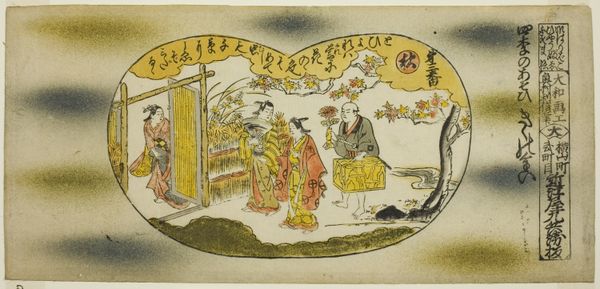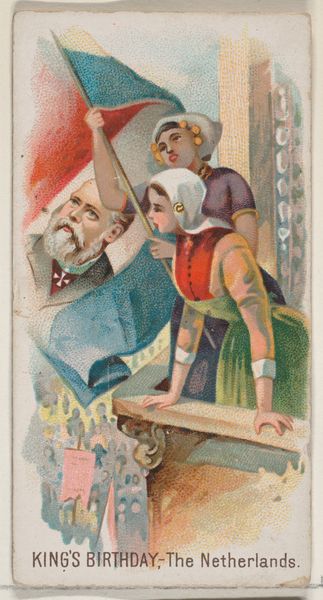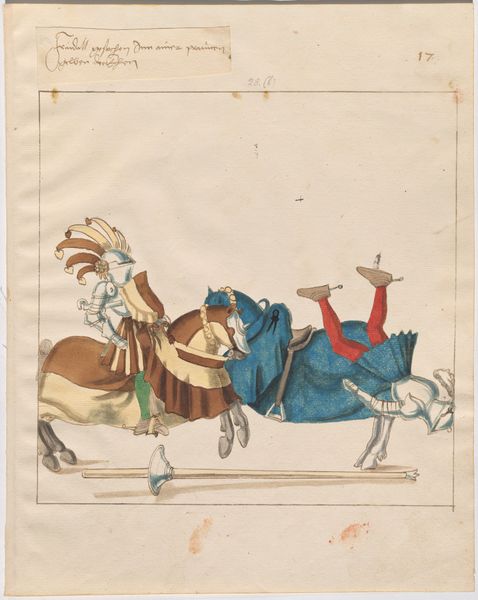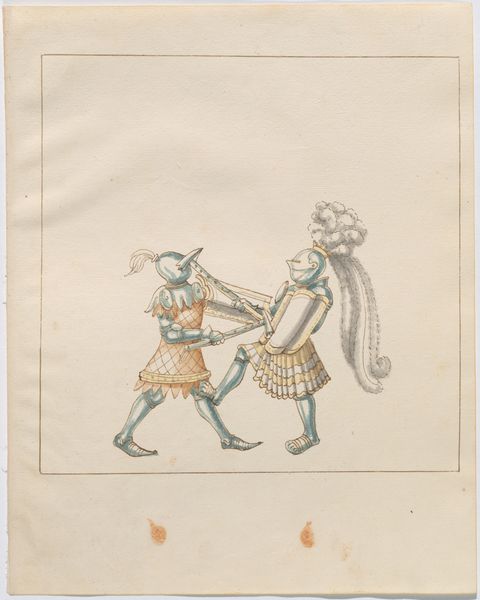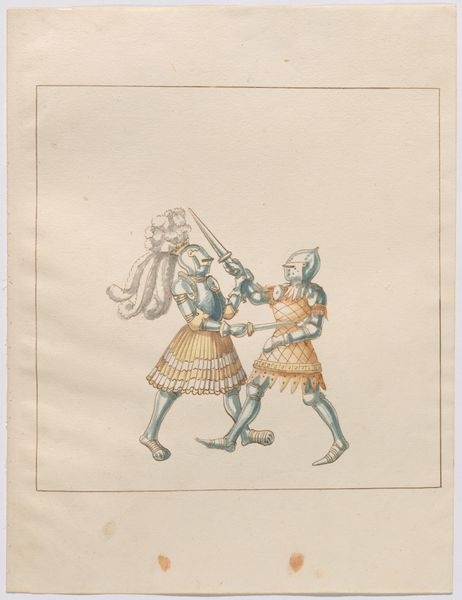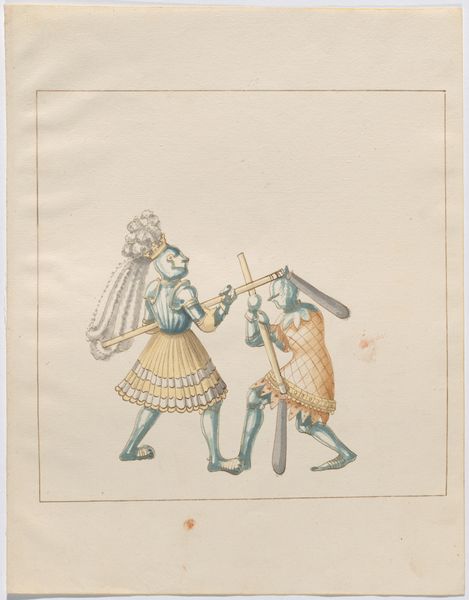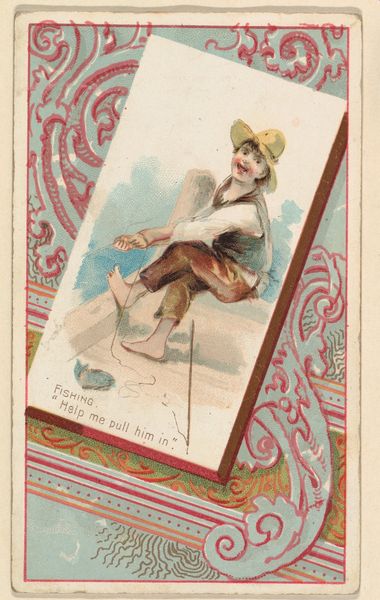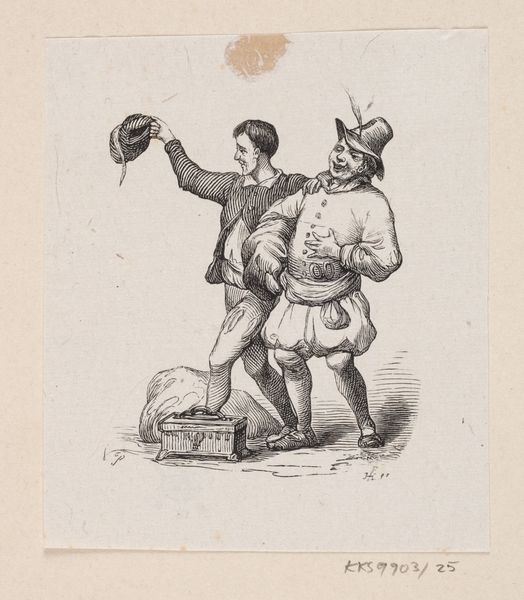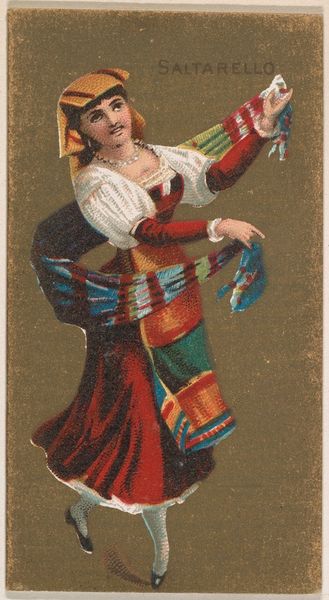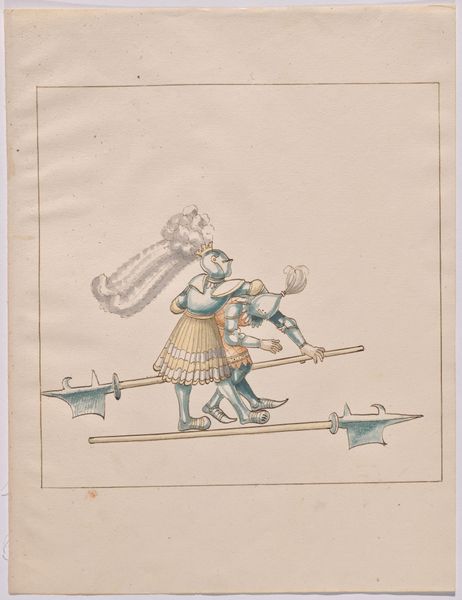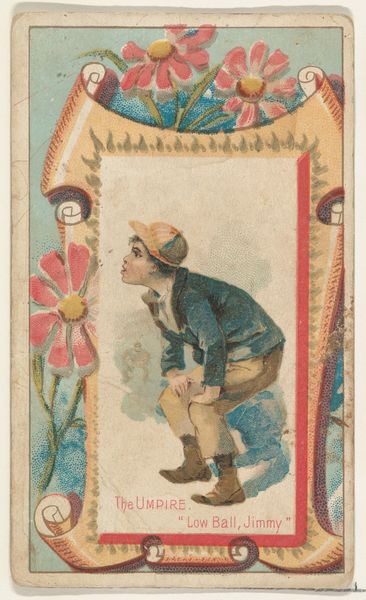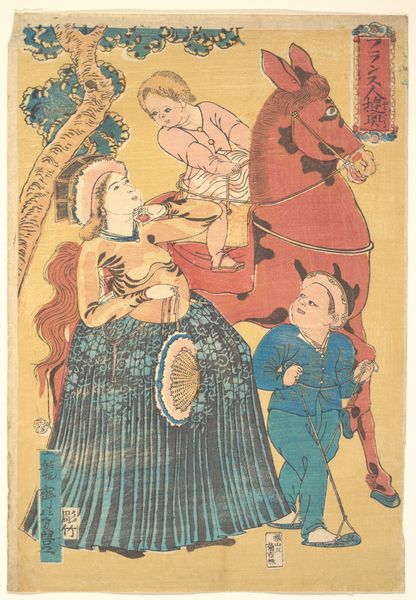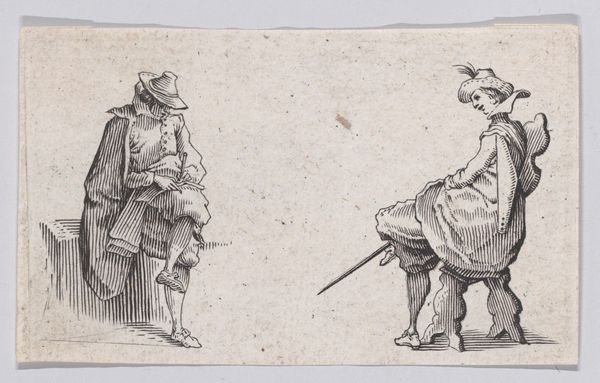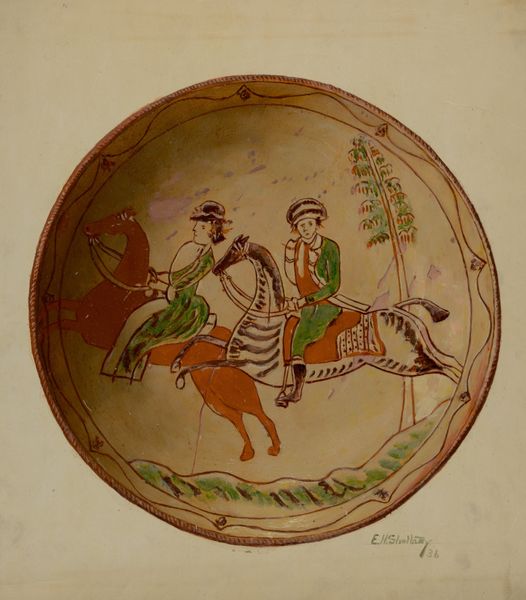![[Photo Collage: Man Pushing Woman in Wheelbarrow] by Juan Pedro Chabalgoity](/_next/image?url=https%3A%2F%2Fd2w8kbdekdi1gv.cloudfront.net%2FeyJidWNrZXQiOiAiYXJ0ZXJhLWltYWdlcy1idWNrZXQiLCAia2V5IjogImFydHdvcmtzLzMyNjE2NGJmLWU2NDgtNDc2NC04MTg3LWE2YWMyNWJkODc3Yy8zMjYxNjRiZi1lNjQ4LTQ3NjQtODE4Ny1hNmFjMjViZDg3N2NfZnVsbC5qcGciLCAiZWRpdHMiOiB7InJlc2l6ZSI6IHsid2lkdGgiOiAxOTIwLCAiaGVpZ2h0IjogMTkyMCwgImZpdCI6ICJpbnNpZGUifX19&w=3840&q=75)
[Photo Collage: Man Pushing Woman in Wheelbarrow] 1870 - 1880
0:00
0:00
Dimensions: Mount: 10.5 x 6.3 cm
Copyright: Public Domain
Curator: Let's turn our attention to a rather whimsical piece from the late 19th century: a photo collage by Juan Pedro Chabalgoity titled "Man Pushing Woman in Wheelbarrow." Editor: Oh, this is charmingly bizarre. It’s immediately striking, in that dreamlike, slightly unsettling way. The proportions are all off, of course. And there's this peculiar stiffness in the figures. It reads like a caricature, but… also, something else? Curator: Indeed. Chabalgoity, based in Montevideo, was creating these around 1870-1880, a time of growing fascination with photography but before its complete democratization. Collage offered a unique form of expression. Note the deliberate disruption of scale, common in caricature but functioning here almost as social commentary. Editor: I see a symbolic element here. The man pushing the woman suggests a particular power dynamic, a potential commentary on gender roles in that period. The wheelbarrow itself – a tool, a vehicle – is crammed with blooms, seemingly plucked or delivered, suggesting a gentler purpose, a token. How did collage come into play in society? Curator: Precisely. Collage at the time, still novel, was embraced because it presented a new way to represent ideas, often challenging the rigid conventions of established painting or traditional portraiture. In terms of political imagery and social structures, consider that caricature was commonly employed as political commentary. It allowed the artist to playfully critique existing norms. This particular example can reflect many aspects of relationships and social commentary from gender roles and romantic gestures and could be poking fun at conventional views. Editor: This makes perfect sense. By using collage and photographic elements, he takes real likenesses and distorts the context, creating an uncanny commentary that’s more nuanced and psychologically charged than a straightforward portrait. The man’s exaggerated features contrast sharply with the rather stiff and posed look of the woman… quite memorable. The image conveys conflicting impressions about gender roles, romance, and social values. Curator: And the use of photography allowed Chabalgoity to present his subjects with a certain degree of "authenticity," even while playfully deconstructing their image. We might question which aspect of authenticity, though? What do you take away now? Editor: What initially appeared to be lighthearted and absurd actually prompts us to consider the complexities embedded within social norms. Very intriguing.
Comments
No comments
Be the first to comment and join the conversation on the ultimate creative platform.
